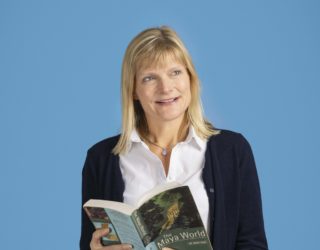Here at Thomson Ecology there are many bird enthusiasts. So many of us were very eager to read the recently published fourth review of the Birds of Conservation Concern (BOCC 4) (Eaton et al. 2015). The BOCC 4 assesses the population status of 244 bird species in the UK, Channel Islands and the Isle of Man.
It does this using several criteria including global conservation status, recent decline, range decline, historical decline, European red list status, rare breeders, localised species and international importance. Depending on the bird’s status, it is placed on either the red, amber or green lists.
Comparing the BOCC 4 species list with BOCC 3 (Eaton et al. 2009) shows that three species – Temminck’s Stint (Calidris temminckii), Wryneck (Jynx torquilla) and European Serin (Serinus serinus) – have been removed from BOCC 4 species list as there is no available data of their breeding in the last five years in the UK and no evidence of a large non-breeding population found in the UK.
Temminck’s Stint and the European Serin were always considered rare breeders in the UK. However, according to records, the Wryneck last bred in the UK, where once it was widespread across 54 counties, in 2002.
The RSPB once sold bird boxes for them. It is worrying that a bird once so widespread disappeared from our countryside. The loss of the Wryneck as a breeding bird in the UK may be due to the increase in rainfall during the breeding season, restricting its breeding range to mainland Europe and Russia. It is some consolation that they are breeding outside the UK, and they can occasionally be found on passage along the east coast of England. A more pressing worry for the future bird population status would be the loss of species that are endemic or under threat globally such as the willow tit (Poecile montanus) and the capercaillie (Tetrao urogallus); the loss of these species would be a blow to biodiversity. Here in the UK they are all on the red list.
Despite this doom and gloom, one addition has been made to the list, Caspian gull (Larus cachinnans). The Caspian gull was only officially recognised as a separate species from the herring gull (Larus argentatus) in the UK in 2007 (BOU 2008) and has been included in BOCC 4 due to the large non-breeding population that can be found in the UK.
Of these 244 species, BOCC 4 placed 67 (27.5%) on the red list, 96 (39.3%) on the amber list, and 81 (33.2%) on the green list. 67 birds! That is over one quarter of our birds on the red list.

The red list has seen an alarming increase of 15 bird species. Among these are the merlin (Falco columbarius), white-fronted goose (Anser albifrons) and long-tailed duck (Clangula hyemalis). The majority of those on the red list come from birds breeding in upland or coastal habitats.
However, there are some success stories. The green list has increased to include birds such as the barn owl (Tyto alba). The positive changes in the lists can be due to improvements in conservation efforts. However, they can also be attributed to the change in how assessment criteria such as historical data were treated.
Overall things look bleak. If things are to improve, it is suggested that a targeted conservation approach is required, and land management is done in a way to help our birds. Some bird species such as the corncrake (Crex crex) will always need conservation support due to their specific habitat requirements. Further effects related to climate change are beginning to become apparent as birds living on the edge of their UK range are declining, such as the redwing (Turdus iliacus). Climate change also affects seabirds, which in turn has a knock-on effect on the marine food chain. However, some species, such as the little egret (Egretta garzetta) and the firecrest (Regulus ignicapilla), are benefiting from the changes in climate. We may yet see new species breeding in the UK as their range moves northward with the changing climate.
So while the trend may look gloomy, the BOCC 4 can help highlight the species that require our help and act as an early warning system. Further to this, the BOCC 4 can be a useful tool for those planning future developments or future conservation management plans.
References:
- British Ornithologists’ Union (BOU). 2008. Records Committee: 36th Report. Ibis 150: 218–220.
- Eaton MA, Aebischer NJ., Brown AF., Hearn R., Lock L., Musgrove AJ., Noble DG., Stroud D. and Gregory R.D (2015) Birds of Conservation Concern 4: the population status of birds in the United Kingdom, Channel Islands and the Isle of Man. British Birds 108, pp 708–746.
- Eaton MA, Brown AF, Noble DG, Musgrove AJ, Hearn R, Aebischer NJ, Gibbons DW, Evans A and Gregory RD (2009) Birds of Conservation Concern 3: the population status of birds in the United Kingdom, Channel Islands and the Isle of Man. British Birds 102, pp296–341.
- Frederiksen, M., Edwards, M., Mavor, R. A., & Wanless, S. 2007. Regional and annual variation in Black-legged Kittiwake breeding productivity is related to sea surface temperature. Marine Ecology Progress Series 350: 137–143.










